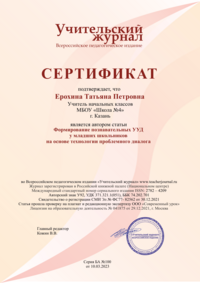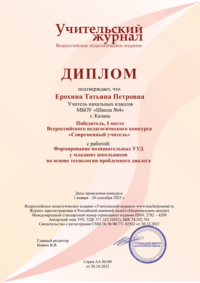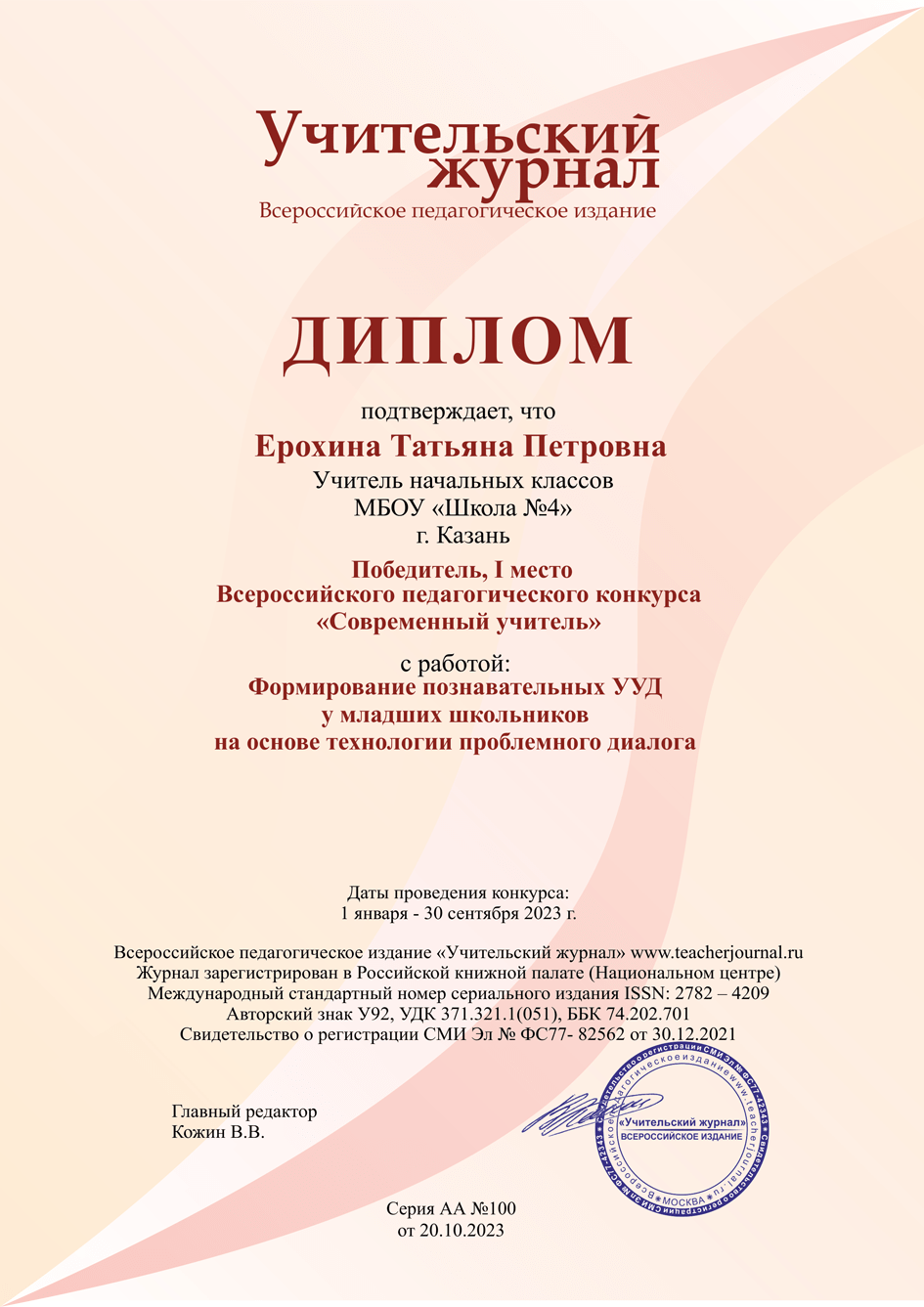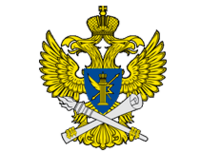Разработка урока «Значение одного голоса»
Автор: Фоменко Ольга Ивановна
Организация: ГБОУ ЛНР «ЛСШ № 57 имени Г.С. Петрова»
Населенный пункт: ЛНР, г. Луганск
The significance of one vote.
Summary of the lesson
Students will participate in a mock election in which they choose someone to represent their class to school authorities. The election is, however, rigged to favor one candidate over the other and to underscore the importance of voting. Students will explore the concepts of civic competencies, the dangers of apathy. Finally, students will conduct a survey about voting behavior and analyze the results.
Objectives
Students will be expected to
- study and train new vocabulary
- explain why it is in people's interest to vote in elections,
- analyze voter apathy and draw conclusions about why it occurs,
- understand the fact that constitutional democracy ultimately rests on the attitudes and habits of citizens
Lesson plan
Beginning of the lesson
Step1 Lead-in
I will not say the topic of our today’s lesson. I want you to be very attentive and I hope that you will tell me what our lesson is devoted to at its end.
If I suggest now, that we should have a day off tomorrow, who will accept such a decision?
Question: What did you do by raising your hands? All of you agreed to my suggestion. You voted for it. And if I gave a suggestion that not everyone in the group would like and it was vital for the group, what should we do? Answer: we should vote for it and if more members of the group voted for it, it would become the rule for the group.
Lesson’s output
Step 2. Vocabulary presentation and discussion.
( the teacher presents the vocabulary using slides as illustration of the meaning)
Vote= expression of opinion or will by person for or against smb/smth by ballot or putting up of your hands
Elections = the process of choosing someone for a certain position or office be eligible to vote= to have the right to vote
platform = programme
candidate = person who wishes himself or put forward by others to take on office
secret ballot = secret voting
the ballot = piece of paper used in secret voting
Step 3 . Short survey.
Now I will divide you into groups and you will have to investigate the constitutions to identify who is eligible to vote in various countries. Then we will discuss the differences.
( the students are given the constitutions of Poland, Chech republic, Hungary, Latvia, Russian Federation, the USA )
Step4. Voting round 1.
Now you know who is eligible to vote. You are not. But you will have a simulation of voting.
- group will "elect" a student who will be its representative in student’s parliament and will be dealing with school authorities.
On the board we have platforms of two different candidates : X and Y.
They are quite different as you see.
Now you will be given ballots for voting. We will have direct secret voting.
You are free to choose the candidate and put your ballot into the ballot-box.
Don’t count ballots yet, just leave them aside.
Step5. Voting. Round2.
Now we will have the second voting round.
I will give you instructions for your voting. Follow them carefully. You should not share them with others at this time.Take a ballot and vote according to instructions you are given.
(Divide the class into teams called "Red", "Blue", and "Yellow". Give each team a copy of the previously prepared sheet with the appropriate voting instructions. from student handout Instructions for Voting. The Red team should only get the section marked "Red" and so on. Note that there are two "Yellow" sections: Yellow # 1 and Yellow #2. One quarter of all students should get section "Yellow". However, make sure that 75% of the Yellow team receives copies of the section Yellow#l and the remaining 25% get section Yellow#2. For example, if there are 8 people on the Yellow team, six should get the copies of Yellow#l and two should get the copies of the yellow#2.)
Let’s count the results. As you understand candidate X has won elections.
Let’s now count the results of the first round. Candidate Y has won.
Now we are going to discuss why it happened.
Please, explain now whether you voted or not and why.
Step6. Analysis.
Did everyone vote in the first round?
Did everyone vote in the second round?
What would the result have been if everyone had voted?
Answer: The second candidate could have won.
What are the reasons why people didn't vote?
- didn't feel like going
- didn't know who to vote for
- didn't believe their vote made any difference
Step 7. Conclusion.
What conclusion can you make to sum up our simulation of election. What topic was the lesson devoted to?
Write down the topic on the blackboard.
Step 8. Presentation.
Really, there were many occasions in history when one single voice made the difference in developing the situation in the country.
France, 1873: The vote of one deputy to the National Assembly determined the
text of the article which named the head of the French state "the President"... and thus the Third Republic was born.
Germany, 1949: Konrad Adenauer was elected Chancellor by a majority of one voice changing Germany's policy and status in post-war Europe.
Poland, 1989: One vote above the quorum during the voting in the National
Assembly allowed Wojcech Jaruzelski to become the President.
Poland, 1993: One no-confidence vote during the approval process of Hanna
Suchocka's cabinet determined its destiny and consequently, resulted in dissolution of the entire second term of Parliament by the President.
United States of America, 1860: Attempt to impeach President Andrew Johnson
failed by one voice in 1860.
The end of the lesson
Step 9.Home/task
You are to conduct a brief poll of ten family members, neighbors or relatives who are eligible to vote. You should, of course, tell people you are conducting a poll in connection with classes and will not be recording names. The question to be asked is : Did you vote at the last elections and give reasons why yes or why not.Be ready to report at the next lesson.
Step 10. Evaluation of the work of the students.
HANDOUT 1.
CANDIDATE X PLATFORM
___ Pupils are not allowed to wear jeans and jewelry
___ No dances because they take up valuable time which students
Could devote to their study
____Students should wear hats with school logo
CANDIDATE Y PLATFORM
____ Do away with semester and end-of-the year tests
____ To install cable TV in student cafeteria
____ To organize school dances each Saturday
HANDOUT2. SITUATIONS FOR VOTING ROUND 2.
Yellow1. You vote for candidate X in this election. You like his programme and the changes which are being suggested.Since this is a secret ballot, you don’t have to inform anyone how you are voting.
Yellow2. You vote for candidate Y in this election. Those campaign issues sound very good to you.But you do not have to discuss your voting with anyone.
- You do not vote in this election.You can’t decide which candidate to support and frankly speaking you don’t care about this election at all.It makes no difference to you who gets elected. If asked about the election just shrug your shoulders.
- You do not vote in this election. You believe your vote will not count anyway and with so many other people voting –what can your single vote change? If asked, let people know this is how you feel.
Don’t be talked out of your position.
- You do not vote in this election.It is raining outside and you do not feel like leaving the house.Actually, even if it did not rain, you would not feel like voting as voting is such a big effort.
If you are asked why you are not voting ,just smile and say, “I don’t feel like it”, or “ the weather is bad” or “ I will vote later”.
ELECTION BALLOT
School 57
To vote, put + or V next to your choice.
______________________________________________________
Candidate X
______________________________________________________
Candidate Y
______________________________________________________
Don’t support any candidate
______________________________________________________









